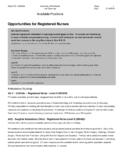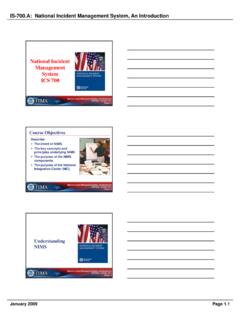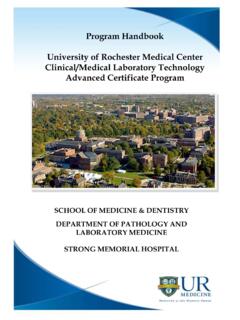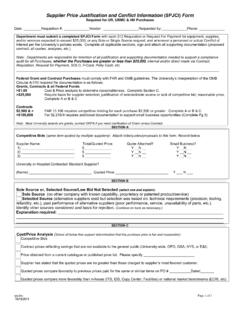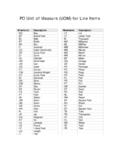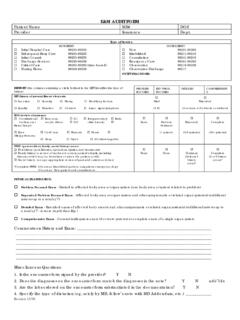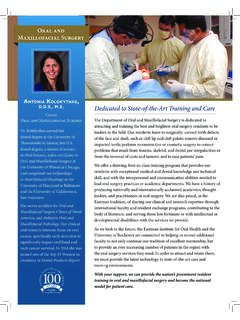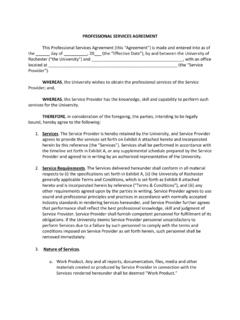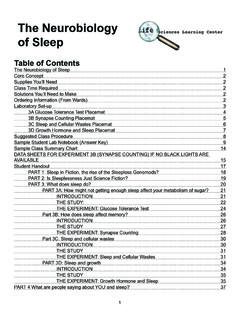Transcription of Cancer and the Cell Cycle - University of Rochester
1 Life Sciences Learning Center Cancer Education Project Copyright 2007, University of Rochester May be copied for classroom use 1 Cancer and the Cell Cycle Overview: This series of 6 learning experiences is designed to give students a basic understanding of the cell Cycle in the context of skin Cancer . As students move through the activities, their understanding shifts from a simplistic definition towards an understanding of regulation of the cell Cycle and how lack of regulation can lead to Cancer . Learning experiences include: Part 1: Information gathering in the context of a young female who has been diagnosed with skin Cancer . Part 2: Exploration of a basic understanding of Cancer from a historical perspective. This experience utilizes a series of four short video clips from the NIH Supplement: Cell Biology and Cancer .
2 Part 3: Class Lecture Notes. Part 4: Mitosis Lab that includes a mitosis simulation using red and yellow popping beads, and online and hands-on experiences identifying cells in various stages of mitotic division. Part 5: Cell animations from the NIH Supplement, Cell Biology and Cancer that bridge cell Cycle and Cancer information. Part 6: Modeling the cell Cycle in a normal cell Part 7: Modeling the cell Cycle in a Cancer cell Living Environment Major Understandings: Gene mutations in a cell can result in uncontrolled cell division, called Cancer . Exposure of cells to certain chemicals and radiation increases mutations and thus increases the chance of Cancer . Feedback mechanisms have evolved that maintain homeostasis. Cancer Education Project Life Sciences Learning Center Cancer Education Project Copyright 2007, University of Rochester May be copied for classroom use 2 Lesson Setup: Time Part #: Title Materials Homework 20 minutes for review of answers Part 1: Catching Some Killer Rays Part 1: Catching Some Killer Rays handout Student text or other resource to gather information Cell Cycle Chart 20 minutes Part 2: Cancer a Historical Perspective Handout for Activity 2 from NIH: Cell Biology and Cancer .
3 Master Section 1 available on CD or online at To print, select Teachers Guide then PDF Files for Printing then Activity 2 Masters , download and print Understanding Cancer worksheet. To view videos online: Click on Web Portion of Student Activities , then click on Cancer and the Cell Cycle 20 minutes Part 3: Class Notes on Mitosis Part 3: Class Notes on Mitosis handout. Student version and key for teachers provided. 80 minutes Part 4: Mitosis in Plant and Animal Cells Part 4: Mitosis in Plant and Animal Cells laboratory handout. Popping bead kits Internet access to: Click on Onion Root Tips on left side column. Slides of onion root tip or other sample cells in mitosis Microscope 40 minutes Part 5: Causes of Cancer Animations Worksheet for Activity 2 from NIH: Cell Biology and Cancer . Master Section 2 available on CD or online at To print, select Teachers Guide then PDF Files for Printing then Activity 2 Masters , download and print Understanding Cancer worksheet.
4 To view animations online: Click on Web Portion of Student Activities , then click on Cancer and the Cell Cycle , then click on Cell Cycle Animations 40 minutes Part 6: Modeling the Normal Cell Cycle Cell Cycle Wheel Cell Cycle Modeling Kit (one per group of 4 students) Part 6: Modeling the Normal Cell Cycle Life Sciences Learning Center Cancer Education Project Copyright 2007, University of Rochester May be copied for classroom use 3 Bingo chips 40 minutes Part 7: Modeling the Cell Cycle and Cancer Cell Cycle Wheel Cell Cycle Modeling Kit (one per student group of 4 students) Part 7: Modeling the Cell Cycle and Cancer Life Sciences Learning Center Cancer Education Project Copyright 2007, University of Rochester May be copied for classroom use 4 Teacher Instructions - Part 1 Catching Some Killer Rays 1.
5 Distribute copies of Part 1: Catching Some Killer Rays. 2. Read through scenario in class. 3. Assign questions #1-6 to be completed for homework using textbooks or other resources. Alternate: May be assigned in class as group work. 4. Review answers in class the following day round-robin style. Life Sciences Learning Center Cancer Education Project Copyright 2007, University of Rochester May be copied for classroom use 5 Part 1: Catching Some Killer Rays Sheena had always liked to lie out in the sun. She just wasn t happy unless her skin was a golden brown color. Even in the winter, she insisted upon removing the cold white appearance of her skin. I ve got to get to the tanning bed! would be her weekly slogan. Towards the end of her senior year in college, Sheena began to notice a strange black spot on her back. It had not been there a few years ago, and it seemed to look a little different everyday.
6 Sheena decided to show this strange black mark to her doctor. He diagnosed her with malignant melanoma, a serious form of skin Cancer . Her doctor described Melanoma as a disease of the skin in which Cancer (malignant) cells are found in the cells that color the skin (melanocytes). He further explained that the first step in treatment is the removal of the melanoma, and the standard method of doing this is by surgical excision - cutting it out. If the Cancer has spread, then chemotherapy will be necessary. Sheena s head was spinning. She knew she needed a minute to digest the information just given to her. Before Sheena made any decisions, she decided to do a little research. Much of the information that Sheena found centered upon the cell Cycle . She remembered taking biology in high school, but couldn t recall anything about the cell Cycle .
7 She decided to investigate a little further. 1. Define Cancer . 2. What is the cell Cycle ? 3. What is the process of cell division called? Life Sciences Learning Center Cancer Education Project Copyright 2007, University of Rochester May be copied for classroom use 64. What is the period of growth between cell divisions called? 5. Using the following terms (mitosis, G1, G2, S, and cytokinesis), complete the Cell Cycle Diagram that shows the phases of the cell Cycle . Life Sciences Learning Center Cancer Education Project Copyright 2007, University of Rochester May be copied for classroom use 75. Complete the following chart by explaining what happens to the cell and the chromosomes during each phase: Mitosis Cell Division Cytokinesis G1 S Interphase G2 Life Sciences Learning Center Cancer Education Project Copyright 2007, University of Rochester May be copied for classroom use 8 Teacher Instructions - Part 2 Cancer a Historical Perspective 1.
8 Explain to students that the Cancer and cell Cycle information Sheena found was not the result of one person s research. Rather, our knowledge of Cancer has developed slowly over a period of time. The four video clips students will watch highlight some historical knowledge of the causes of Cancer . 2. Distribute one copy of the worksheet from Activity 2 Section1 to each student. This handout for Part 2 is available from NIH: Cell Biology and Cancer . Master , Section 1 available on CD or online at To print, select Teachers Guide then PDF Files for Printing, then Activity 2 Masters , download and print Understanding Cancer worksheet. 3. Using a computer projector, distribute one copy of CD to each student group, open Cell Biology and Cancer . Click on Cancer and the Cell Cycle , then click on news Alert Videos . Or, to view videos online go to: Click on Web Portion of Student Activities , then click on Cancer and the Cell Cycle .
9 4. Watch News Alert Video #1, Cancer and Chemical Poisons . 5. Have students individually fill in the chart on worksheet that corresponds to this video. 6. Watch News Alert Video # 2, Cancer and Your Family History . 7. Have students individually fill in the chart on worksheet that corresponds to this video. 8. Watch News Alert Video #3, Cancer and Radiation Exposure . 9. Have students individually fill in the chart on worksheet that corresponds to this video. 10. Watch News Alert Video #4, Cancer and UV Light . 11. Have students individually fill in the chart on worksheet that corresponds to this video. 12. Give students 5-7 minutes to discuss their answers with their group. 13. Create a classroom Understanding Cancer chart by discussing answers with whole group. Life Sciences Learning Center Cancer Education Project Copyright 2007, University of Rochester May be copied for classroom use 9 Teacher Instructions - Part 3 Class Notes on Mitosis 1.
10 Explain to students that much of our knowledge of Cancer focuses on how cells divide. This activity allows students to follow the major changes in the nucleus during cell division. Distribute one copy of Part 3: Class Notes on Mitosis to each student 2. Complete as lecture notes or as a group study guide. Life Sciences Learning Center Cancer Education Project Copyright 2007, University of Rochester May be copied for classroom use 10 Part 3: Class Notes on Mitosis 1. The process of mitosis is used as a method of _____ for single-celled organisms and some multicellular organisms. Mitosis is also used for for _____ and _____ in multicellular organisms. 2. When mitosis is used for reproduction, it is considered _____. What does this mean? 3. Examples of asexual reproduction include: a.
